The Briefing to Both Sides Before the Battle
The II SS-Panzer Corps has cut deeply into the third band of in depth Soviet defenses. Various strong German forces are advancing, mutually supporting one another. The local situation is this: The ridge line (in the foreground of the attached photo) has just been cracked and that assault force has pulled back to rest and replenish ammo and fuel. The fresh “Kampfgruppe Biedermann” is up to continue the attack straight ahead into the next ridge line. The Russians have been trying to build up forces to counter attack and have yet to show their hand. Air activity on the front is high and either side can expect air assets. Neither side can expect much in the way of artillery support as things have been too fluid.
The Forces and Mission
The German commander was told that he could set up his force right behind the ridge just taken. His mission was to force his way into the final defensive belt remaining on the game board and press past it. For this mission he had a platoon of two mighty Tigers, a platoon of two Panzer IVGs, and a platoon of five Panzer III Js. He also had a platoon of five crack panzergrenadier squads in halftracks. The deck was stacked with an air support chit, a rapid deployment chit, and an armored advance chit which were intended to help speed the assault.
Unknown to the German was the fact that his main enemy was not in front of him as he thought but rather advancing swiftly from off the board to his left and rear. The Soviet Commander had a 10-tank platoon of T-34/76s, a 3-tank platoon of Lend-Lease M3 Lees and a 3-tank platoon of M3 Stuarts as well. Riding on the backs of nine of the T-34s were squads of Guards infantry armed with submachine guns hankering to close with their hated enemy. As with the Germans, the Soviet player had the same chits to be drawn: armored advance, rapid deployment, and air support.
The Battle
Hauptmann Biedermann deployed his Tigers on the large ridge on his left flank and all of the rest of his forces on the rough broken hills of his right flank. They pushed forward enough to begin observation of the Soviet dug in positions. When they had determined that no anti-tank guns seemed to be in place, the commander pushed forward the Pz IIIs and Pz IVs, right up to the entrenchments.
At that moment, the German commander became aware of numerous lavender flares being fired off his left flank. A quick radio communication with regimental headquarters established that this meant a Soviet armored counter-attack was heading for his position. The commander in his Tiger tank watched the rest of his force arrayed across the valley... exactly where he no longer wanted them. They were swiftly recalled from their assault. They made good time turning back, but would not return before their commander would be swamped with unwanted visitors.
Soon, the Soviet blinds started moving on to their corner of the table, out of direct sight of the Tigers on the crest. The Tigers needed to move away from the attack or turn to face it. They chose to move off of the ridge and reunite with their returning lighter tanks. The vanguard of the Soviet tanks on the rear side the ridge saw the German halftracks in the German rear and took a few shots, immobilizing a couple, while the survivors collected their passengers and fled for cover.
Unfortunately for Tiger number 2, it did not clear the ridge before the Soviets started to swarm up. The first Soviet tank platoon up the ridge fired six rounds into the hind end of the retreating Tiger, all hits. The very first shot of the volley resulted in a catastrophic explosion of the Tiger.This was not going well for the fascist invaders.
Next, the Soviet commander pushed forward his headquarters platoon into the valley on the far side of the ridge-- just as the surviving Tiger was inching around the base of the ridge, ready to receive them. Hauptmann Biedermann hit and knocked out two of the four T-34s immediately, including the tank of the Soviet commander himself, who did not survive the conflagration. For good measure, the shot also wiped out one of the tank riding squads. The surviving two T-34s ran straight up the ridge and out of sight as fast as possible.
By this point, the Pz IIIs and Pz IVs had moved closer to the Soviets and were engaged in a shootout. For the rest of the game, the positions remained generally static and hot steel flew back and forth, gradually wearing down the lighter German tanks. The Soviets were getting the better part of this slugfest.
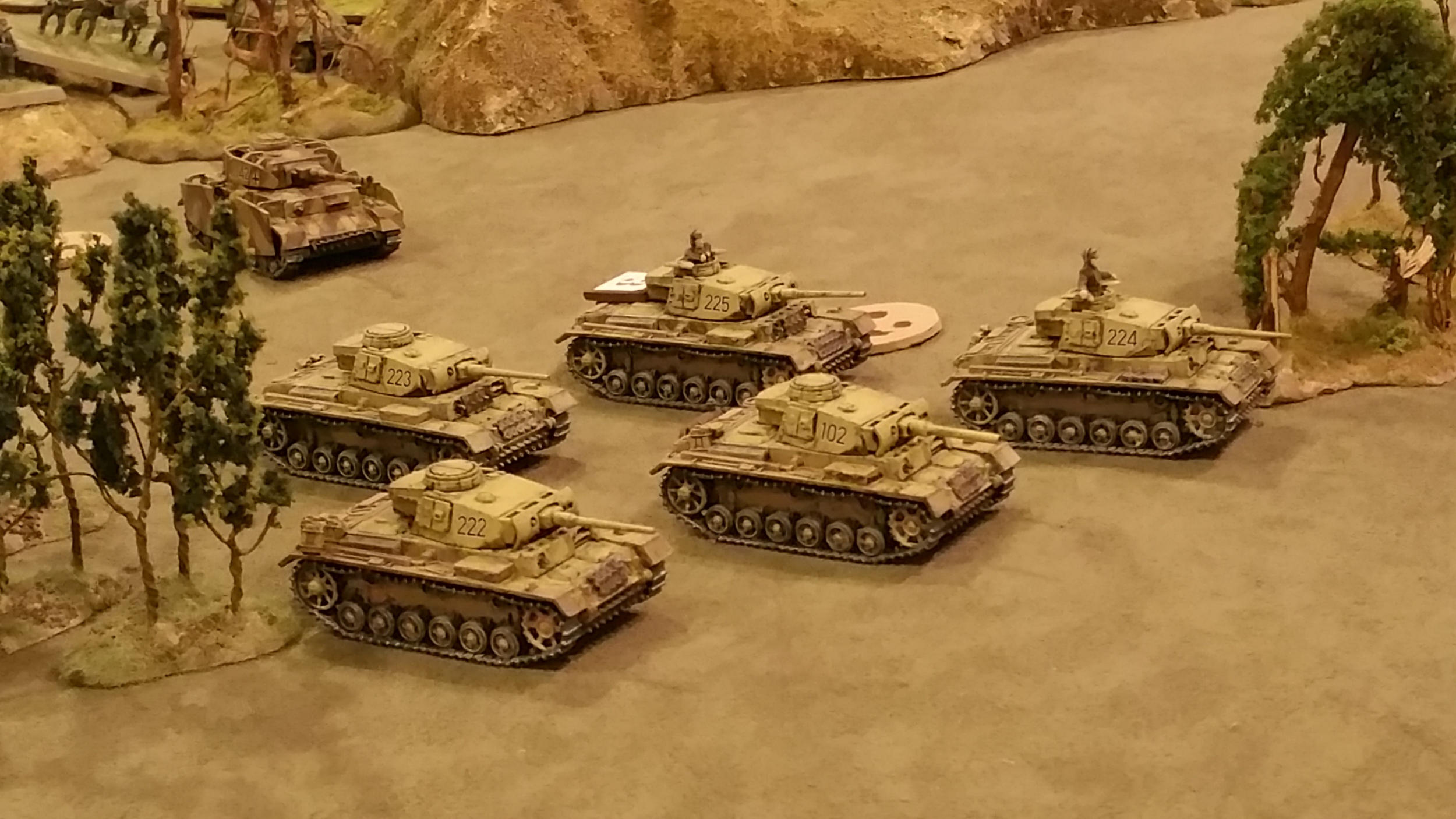
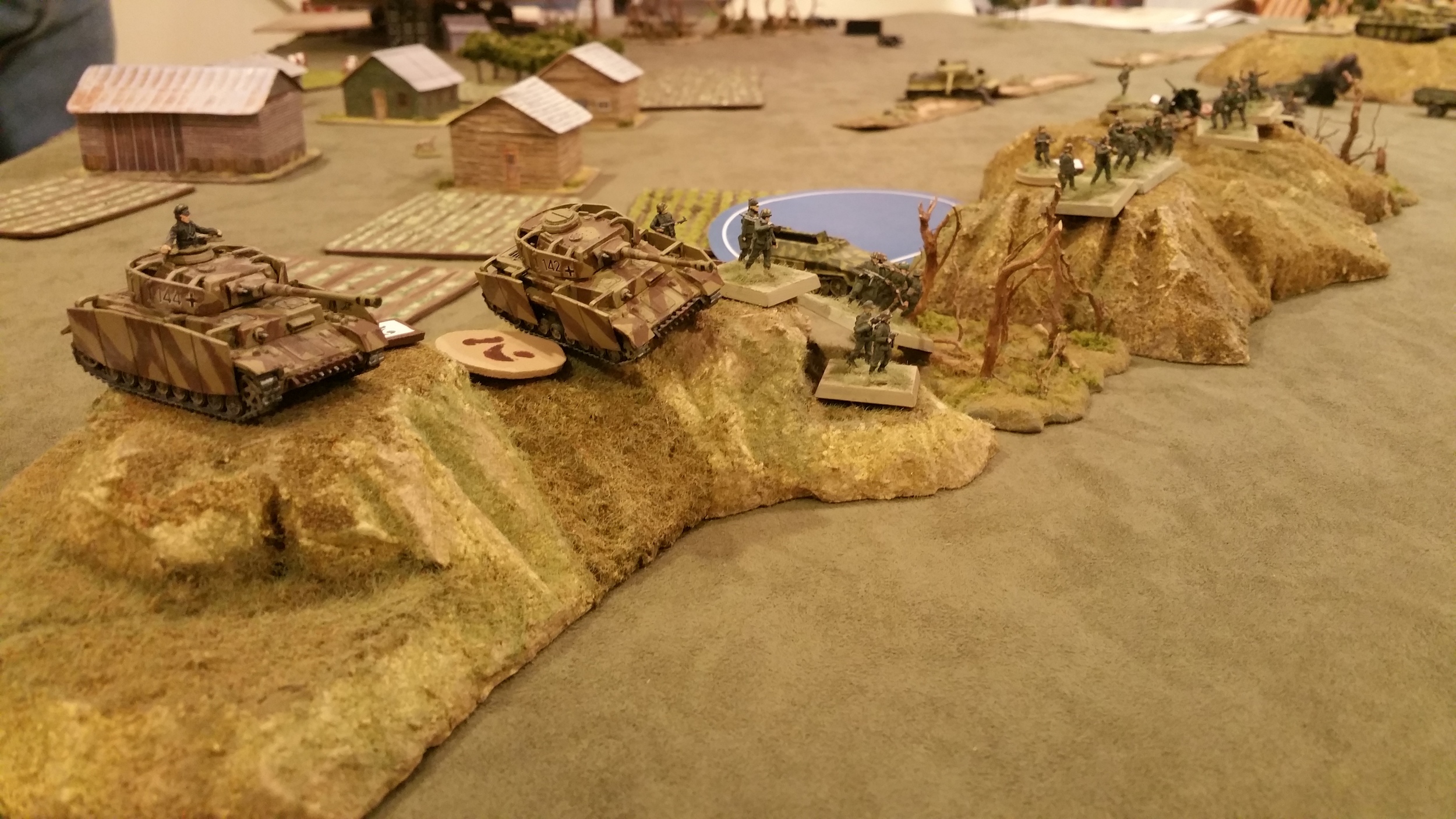
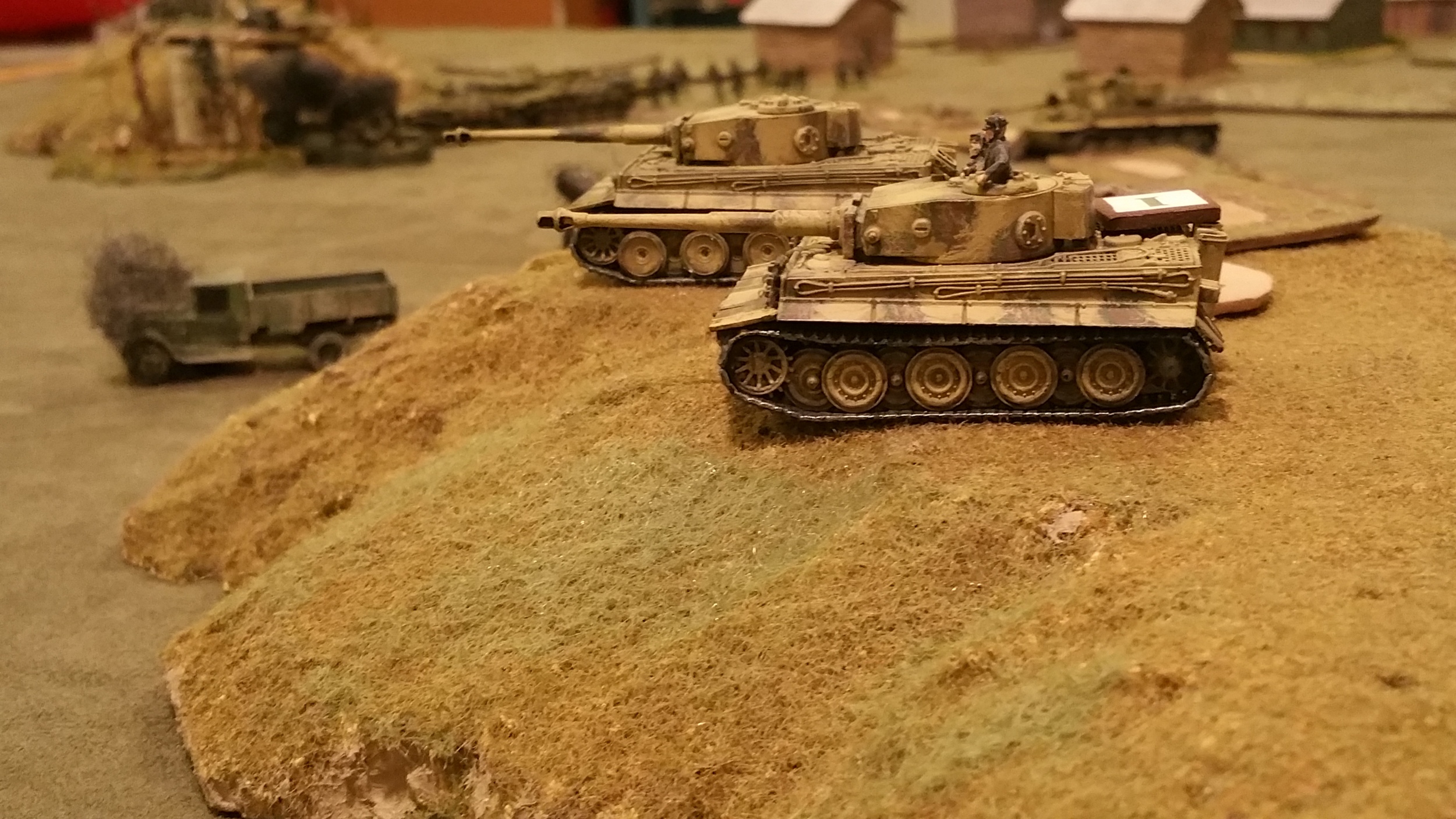
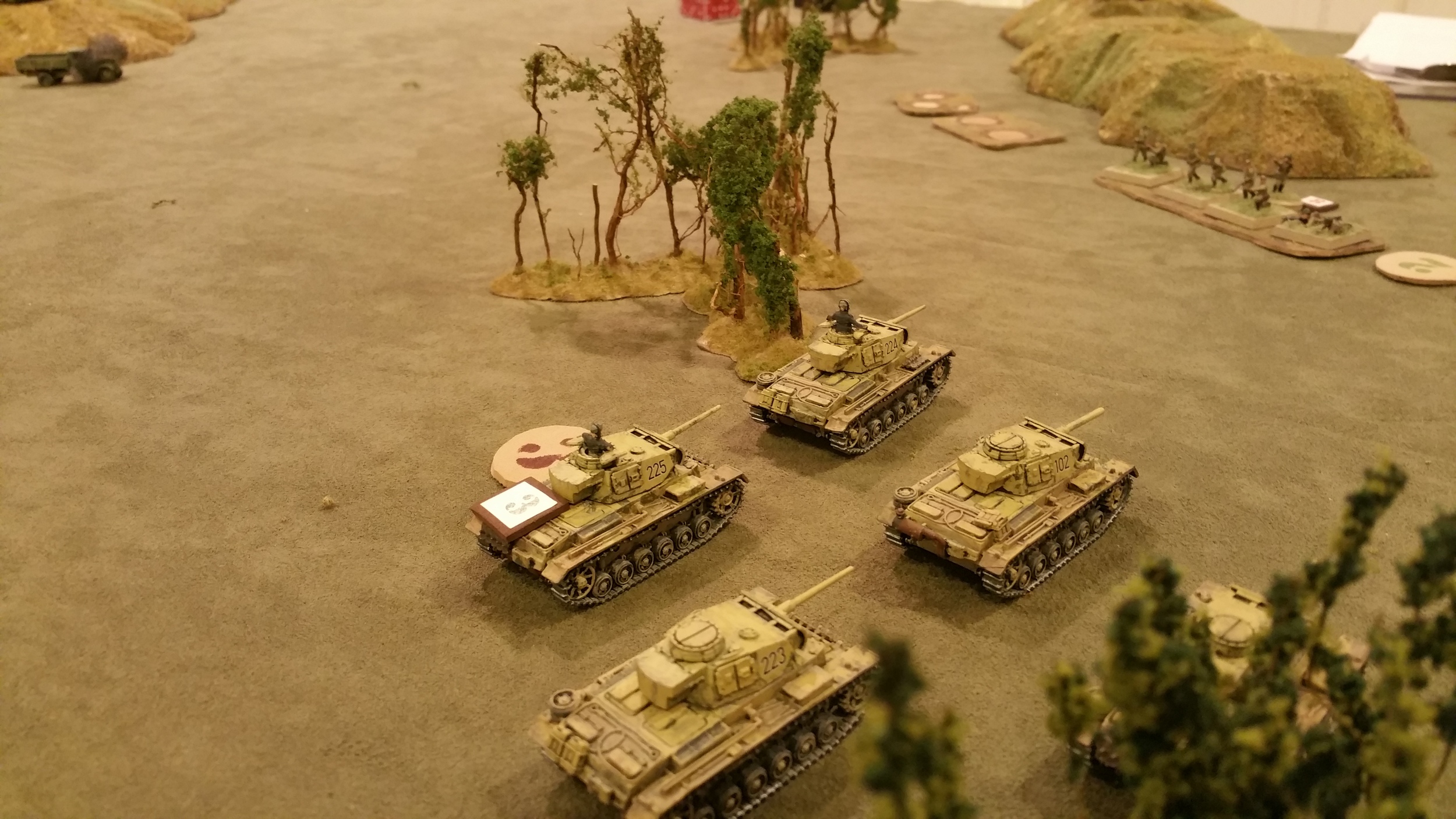
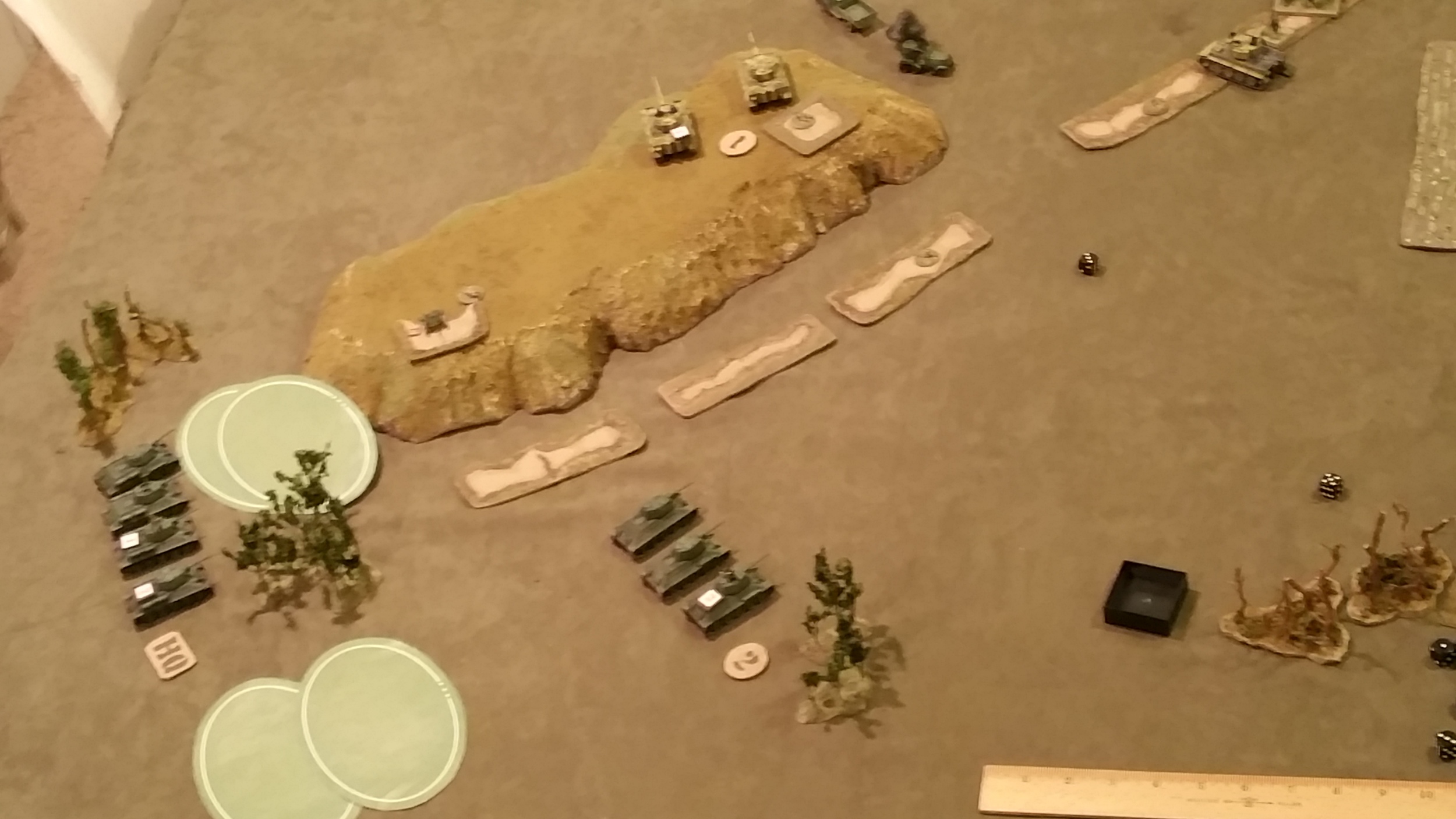

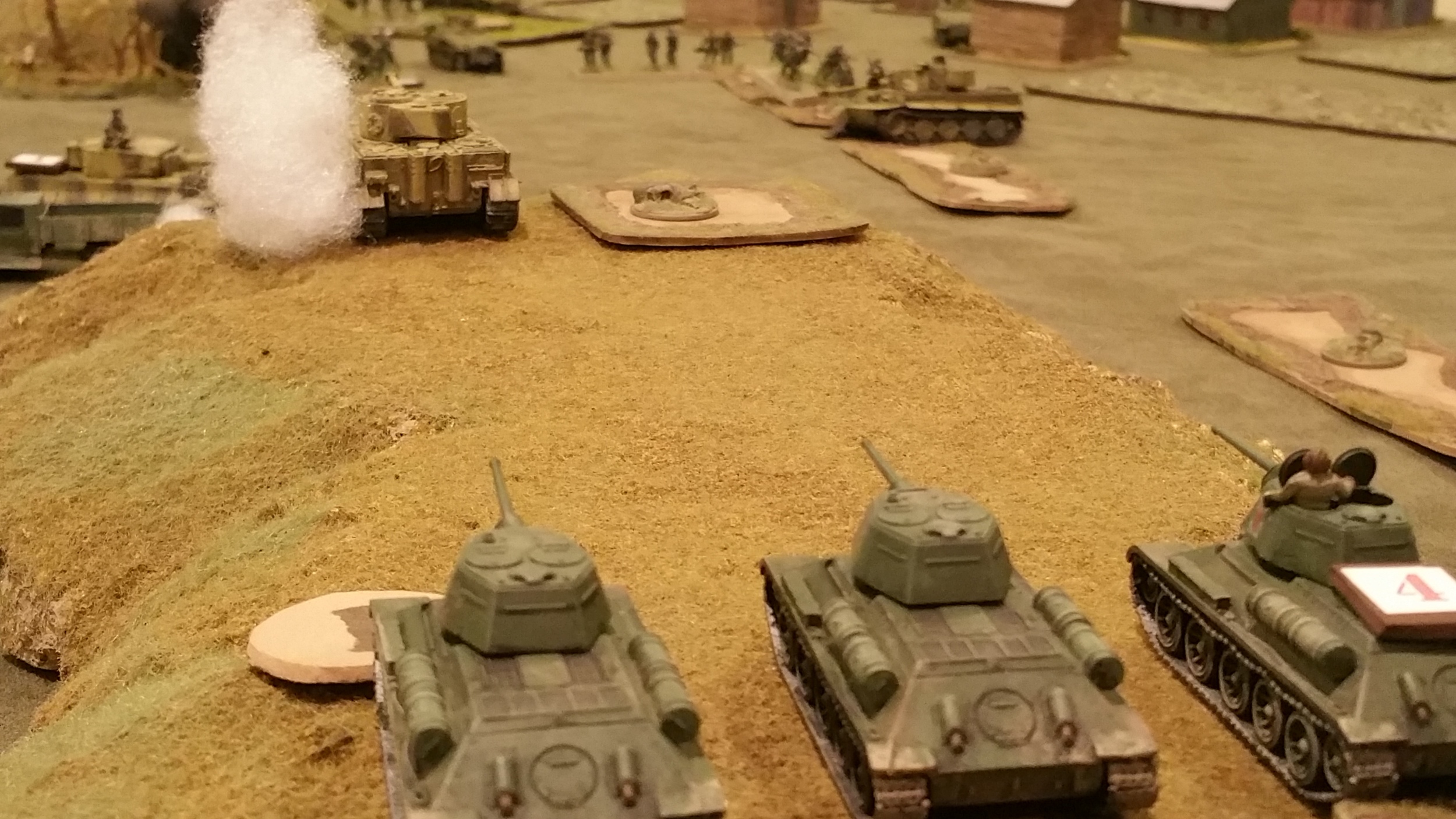
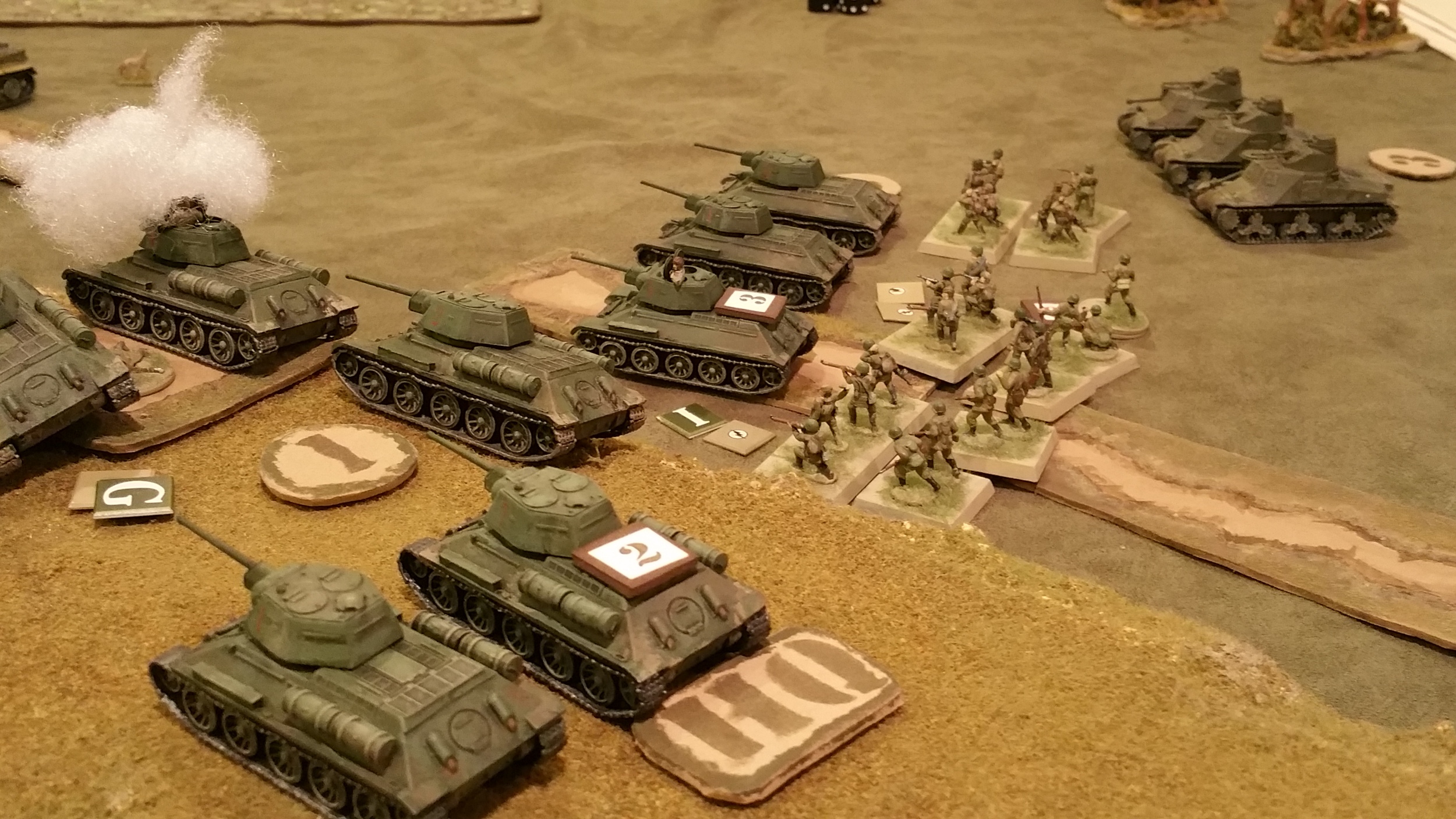
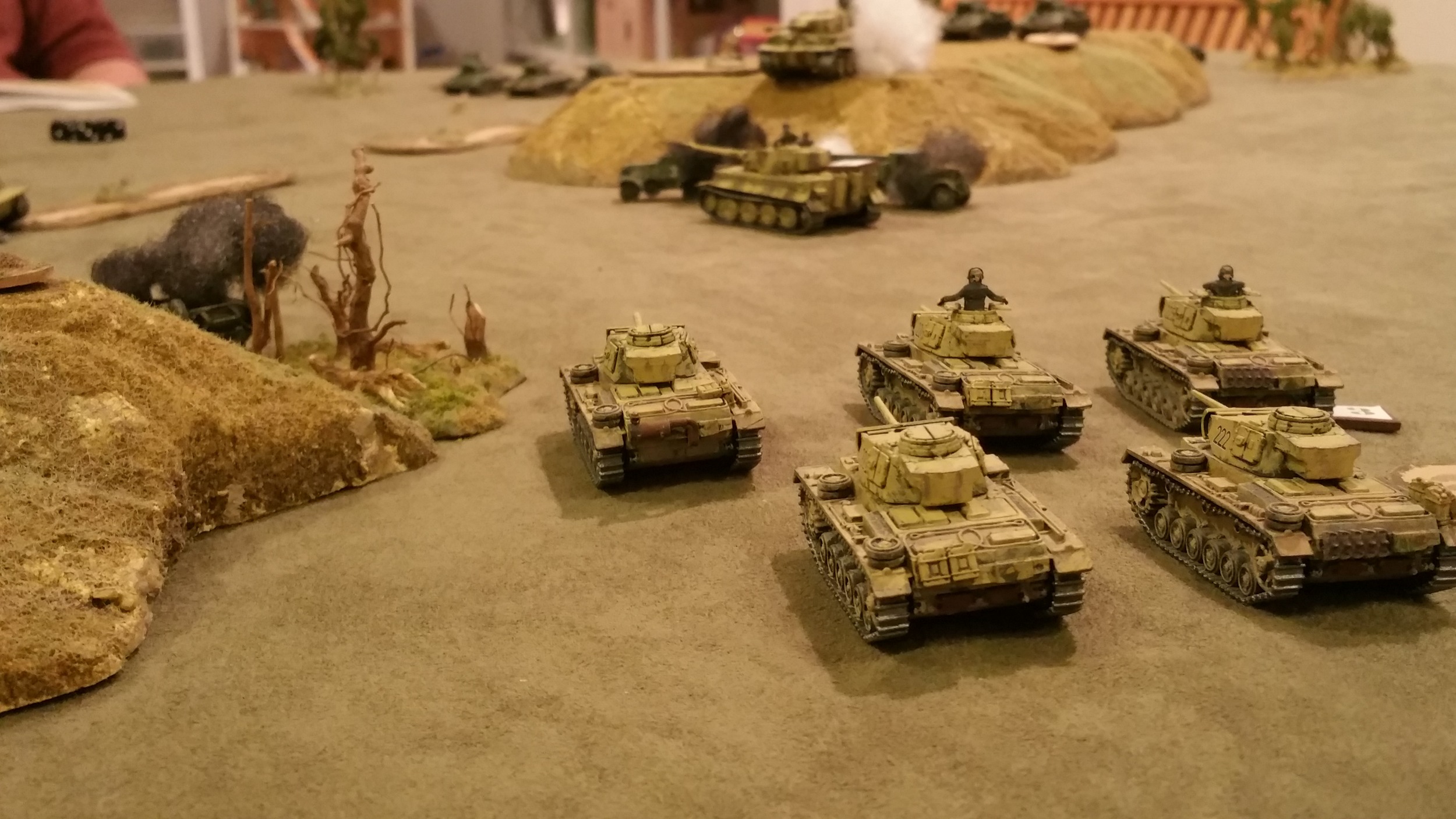
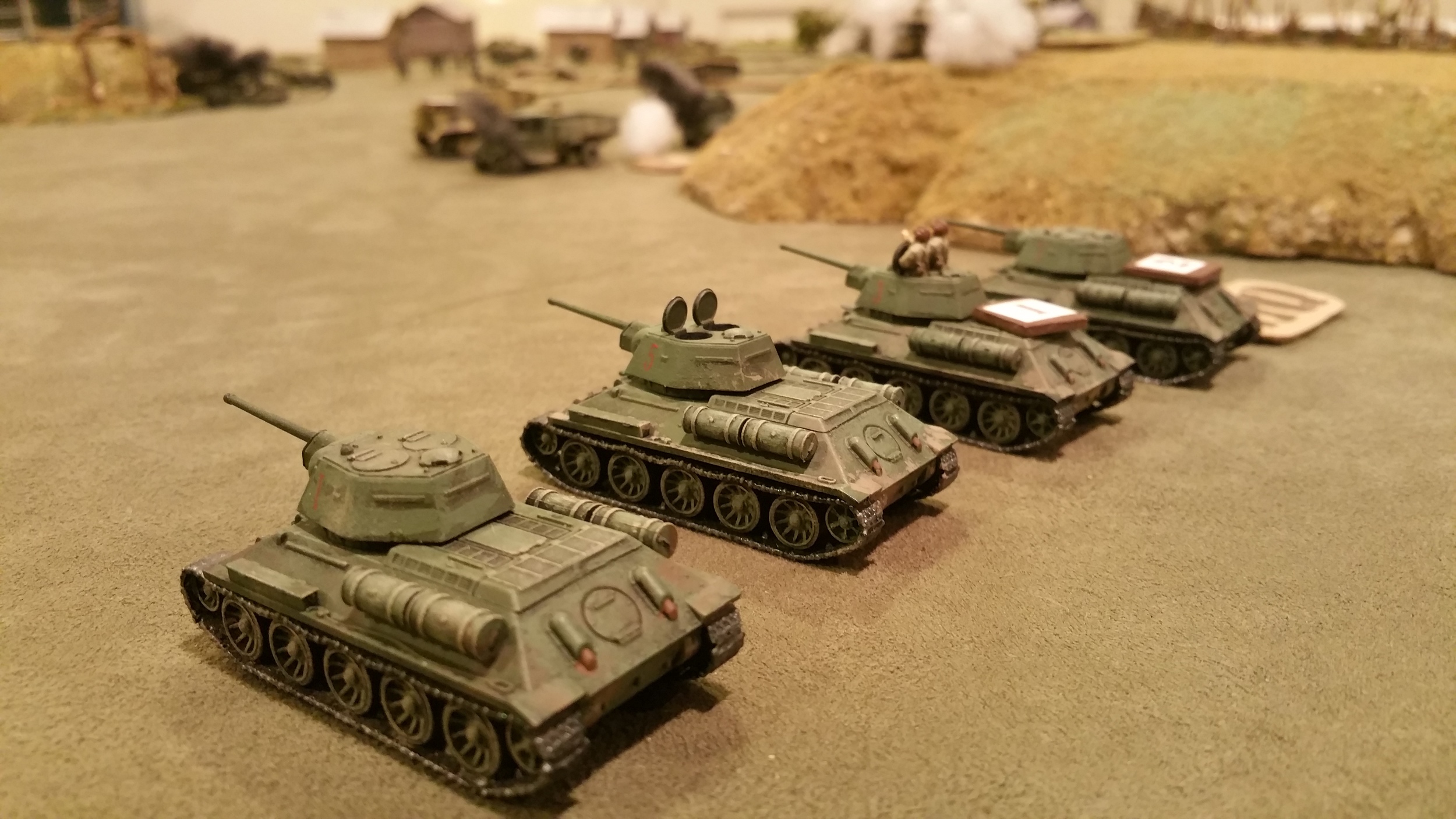
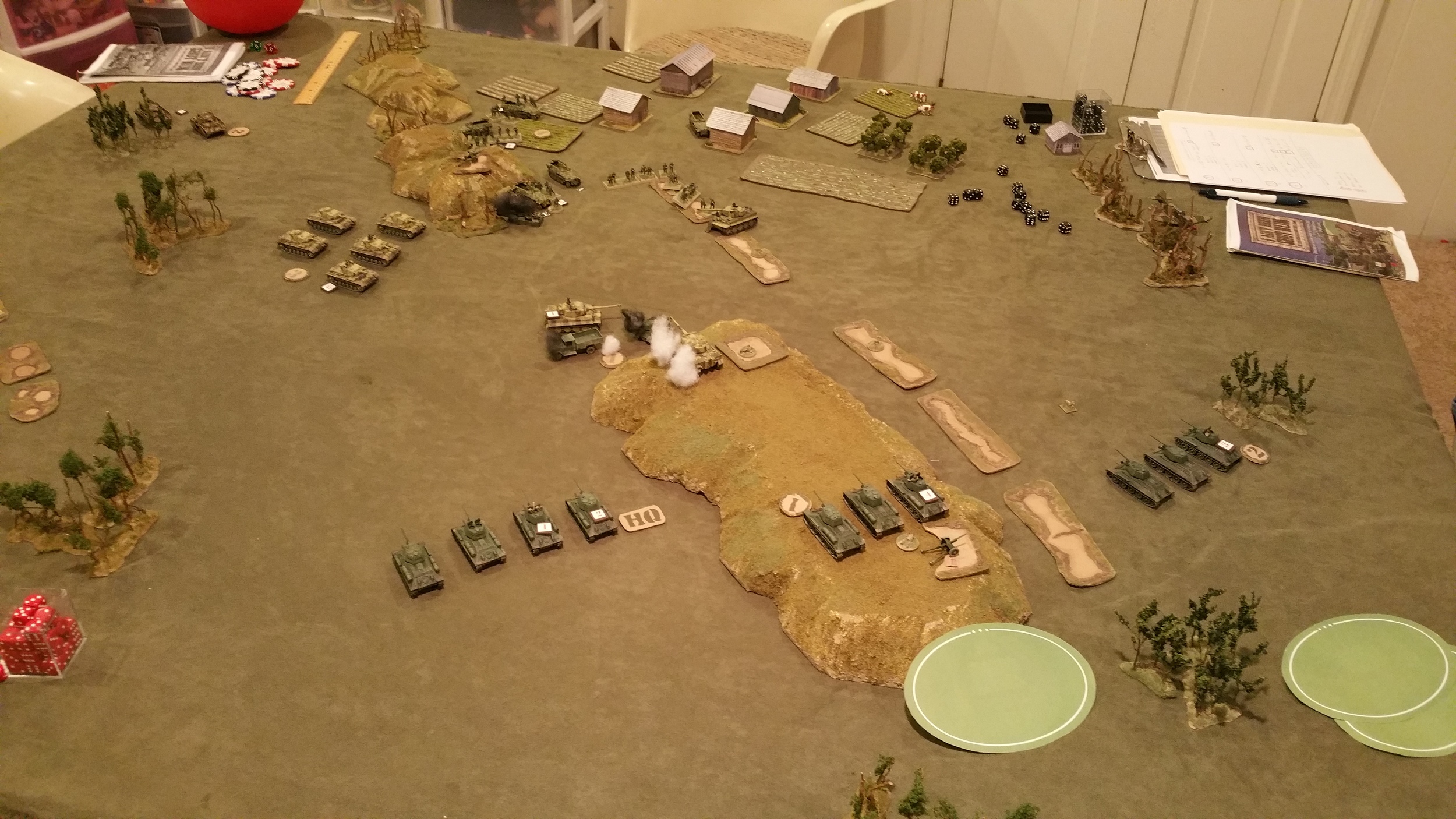
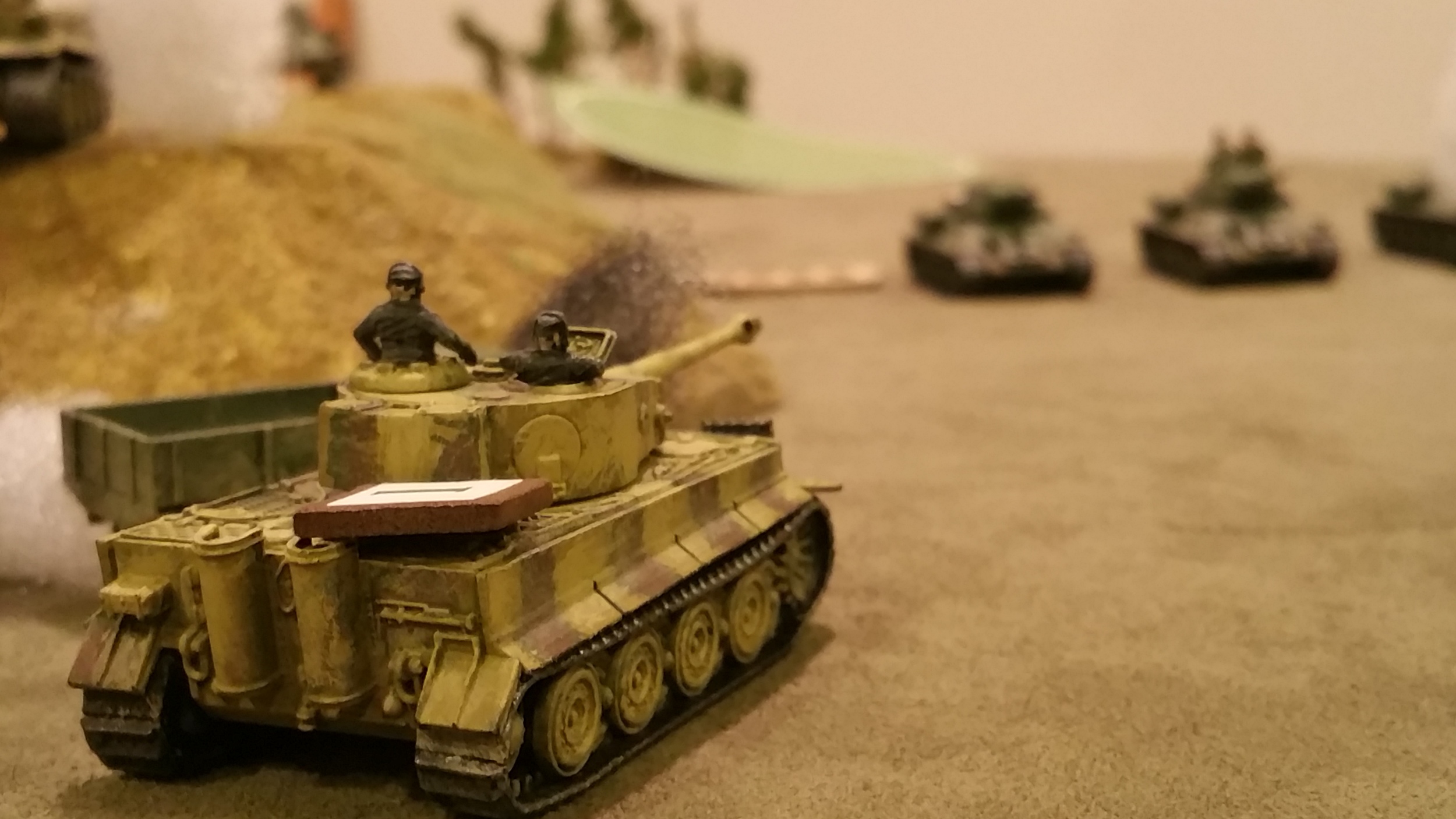
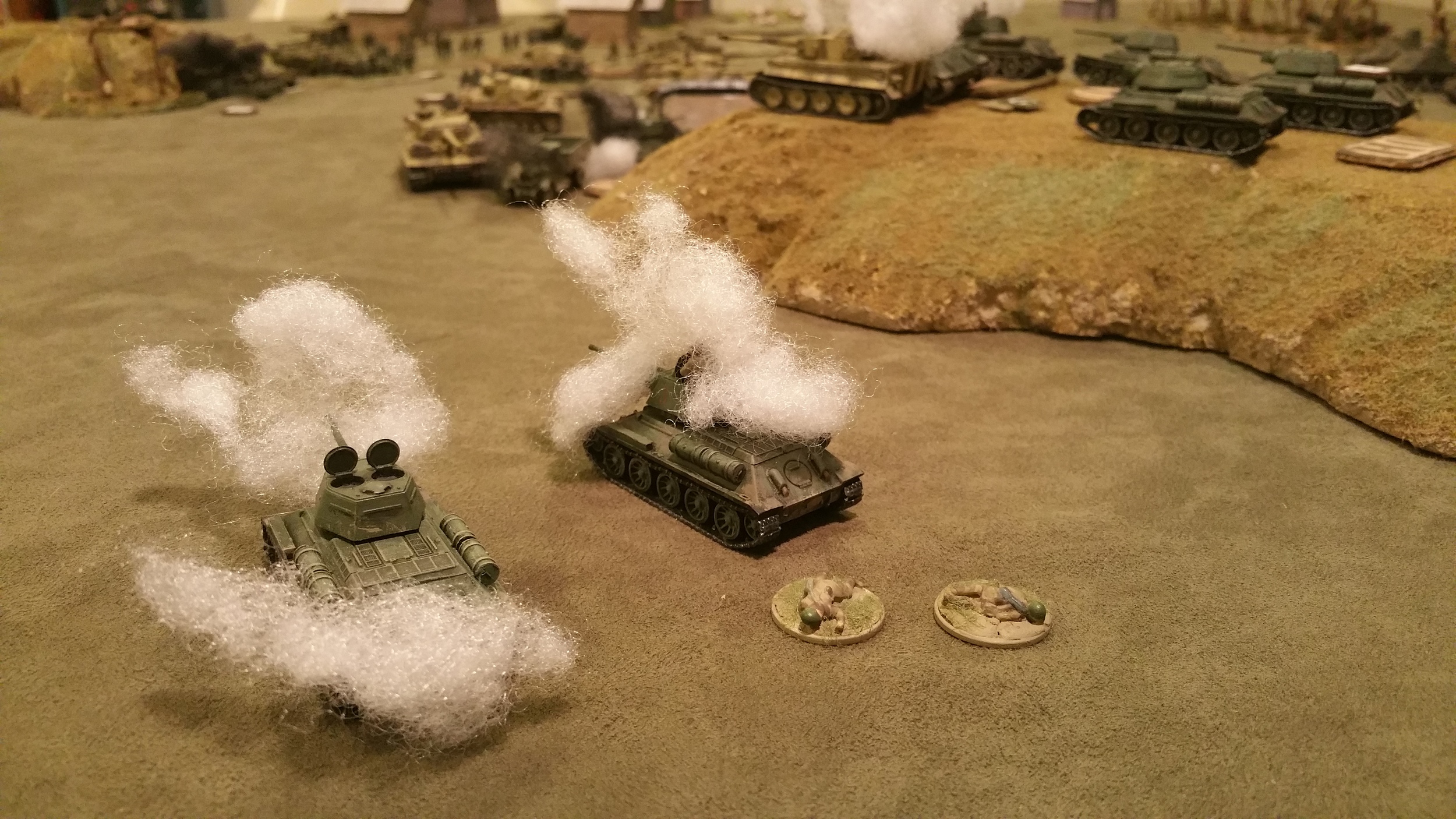
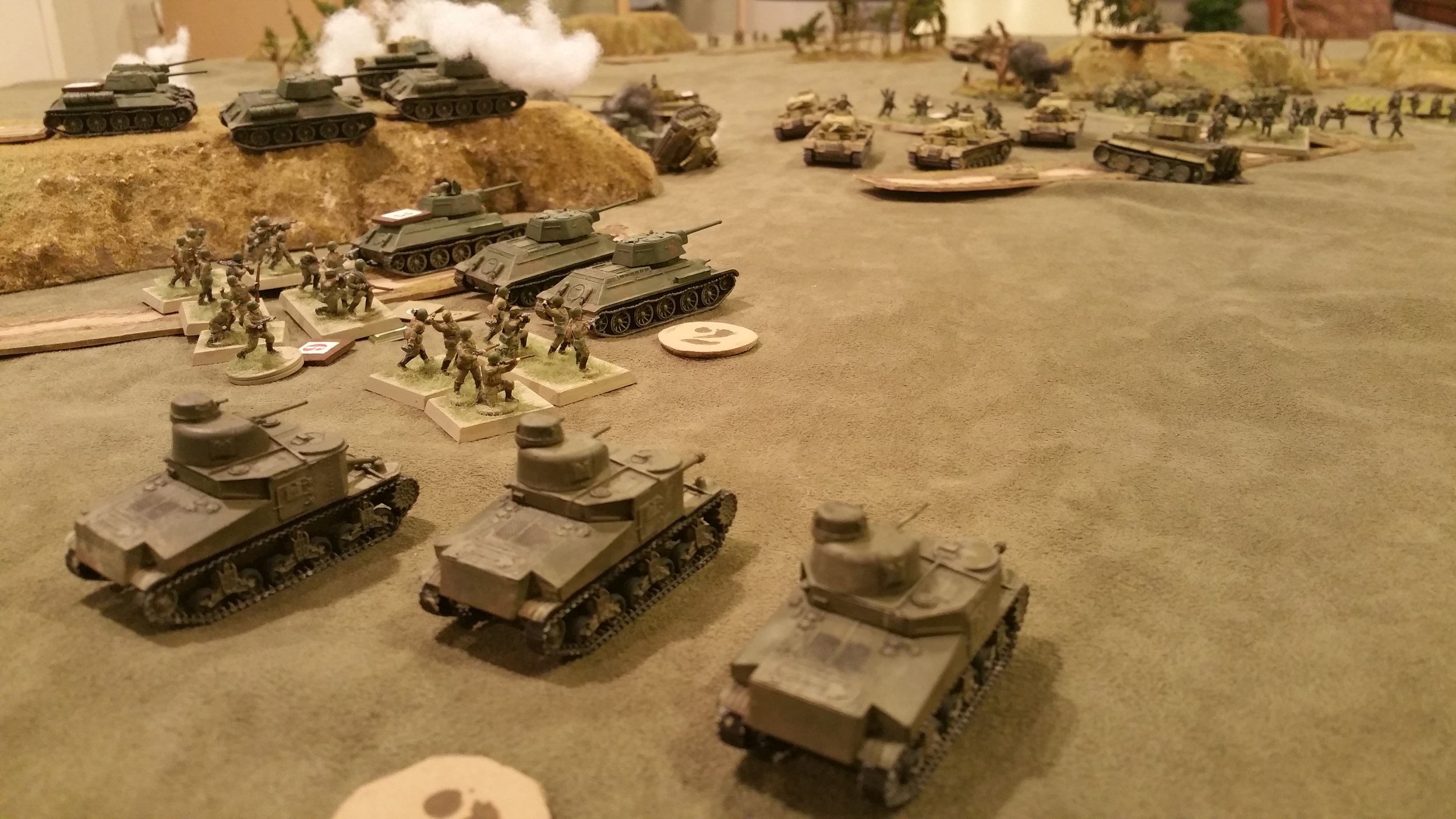
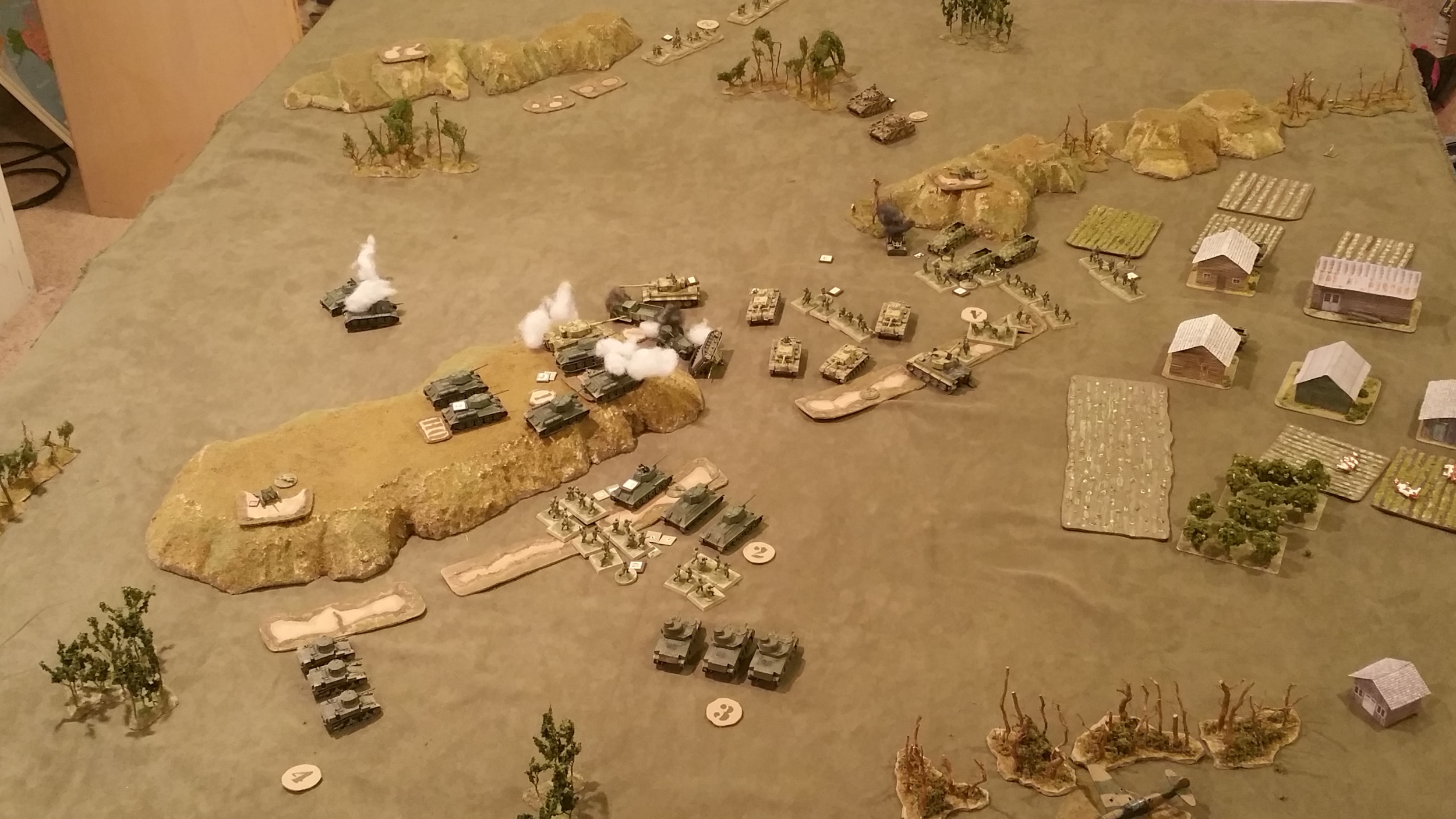

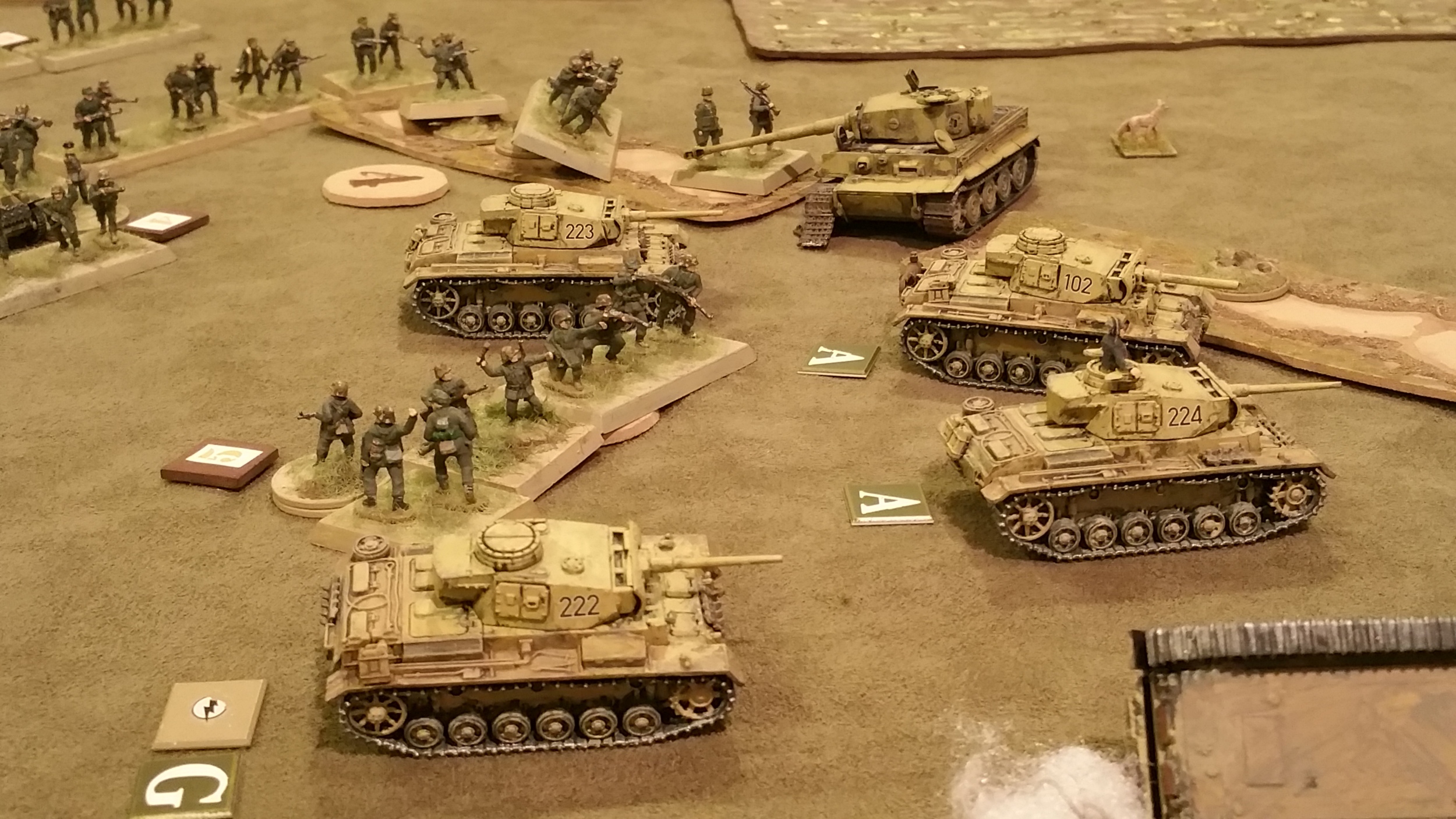
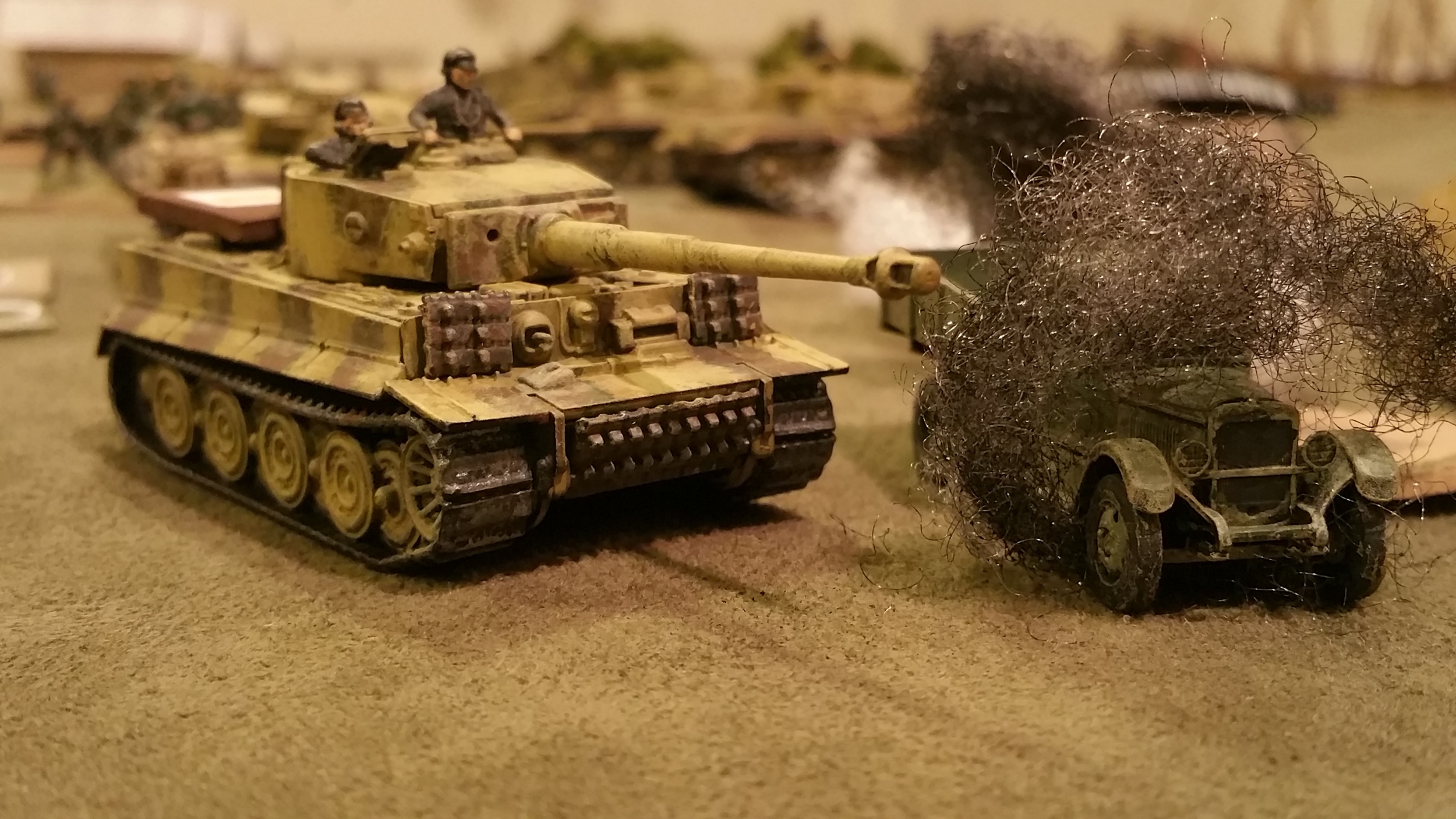
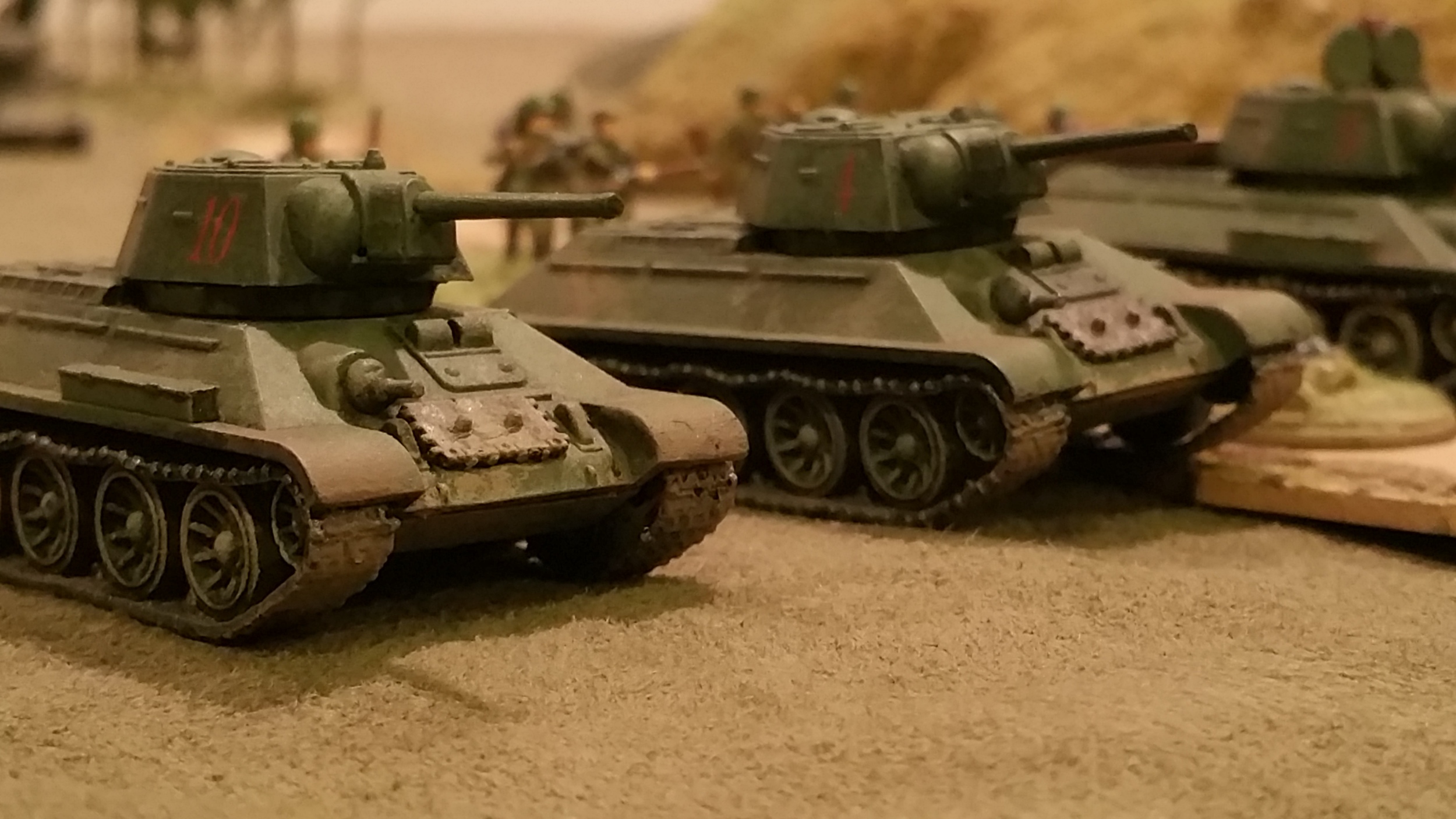

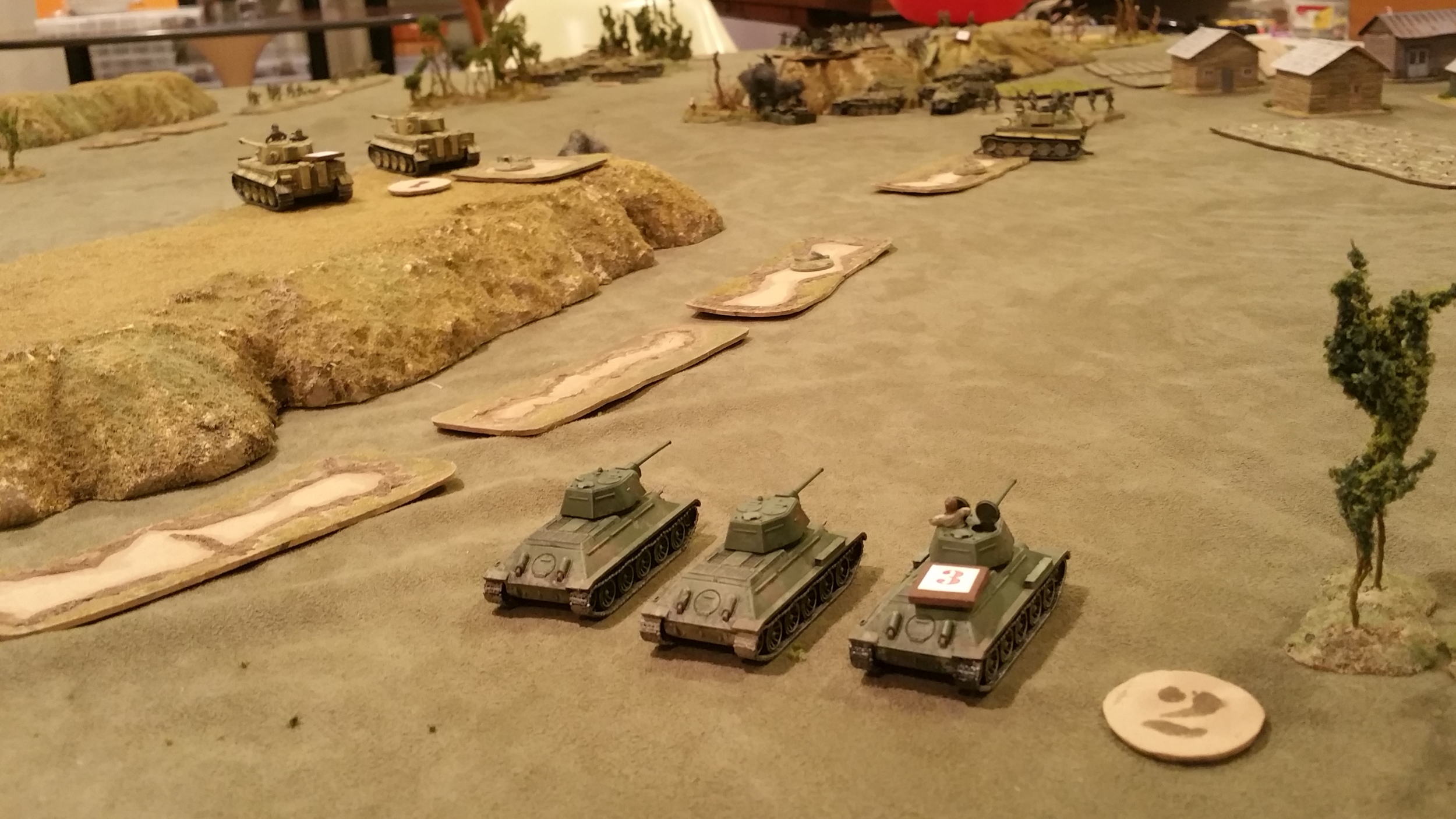
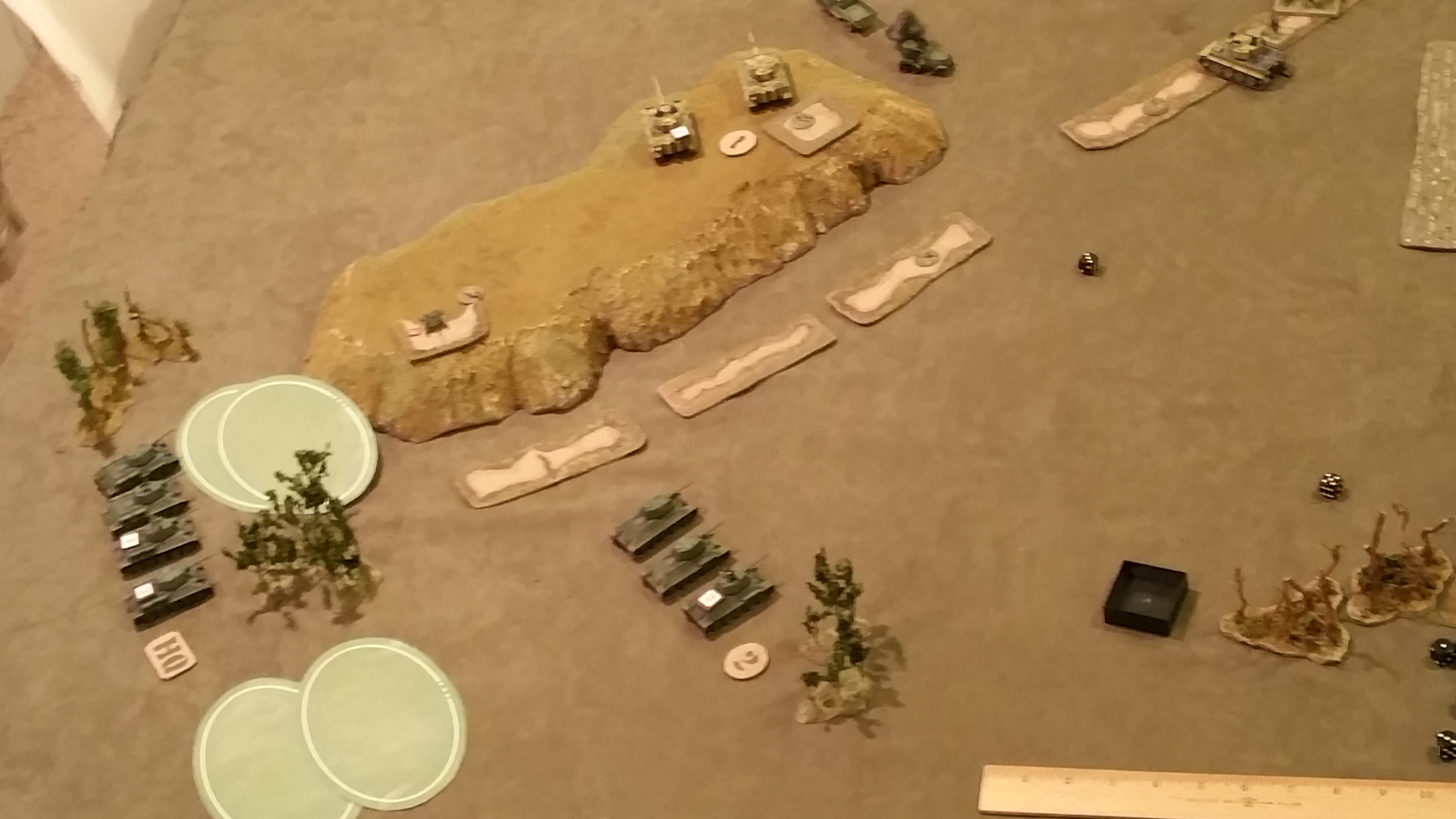




The End
The sole remaining Tiger looked like it was soon going to be stripped of its escorts, and we called the game at that point. It was by no means clear that the Germans would be completely driven off or annihilated it but it was plenty clear that this Soviet spoiling attack out of an unexpected quarter was devastating and had completely disrupted German plans. Great job Captain McIntyre and great job Hauptmann Biedermann!
Here is a snippet of a Wiki article given to both sides before the battle
The II SS-Panzer Corps continued its attack toward Prokhorovka on 11 July 1943. The advance of Leibstandarte was checked by the 2nd Tank Corps, which had been reinforced by the 9th Guards Airborne Division and 301st Anti-tank Artillery Regiment, both from the 33rd Guards Rifle Corps. Totenkopf was resisted by the 31st Tank Corps, the 33rd Guards Rifle Corps' 95th Guards Rifle Division,and 11th Motorized Rifle Brigade of the 10th Tank Corps.To the south of Leibstandarte, the 2nd Guards Tank Corps and the 48th Rifle Corps' 183rd Rifle Division opposed the advance of Das Reich.
By day's end on 11 July Leibstandarte had advanced deep into the Soviet third defensive belt. They had moved up the Psel corridor, cleared Soviet resistance at the Oktyabrsky ("October") State Farm (Russian: Совхоз Октябрьский), crossed a 15-foot (4.6 m)-deep antitank ditch at the base of Hill 252.2 and seized the hill itself after a brief but bloody battle, leaving them only 3 kilometres (1.9 mi) south of Prokhorovka. To its north the panzergrenadiers of Totenkopf achieved a bridgehead across the Psel and tanks had been brought across, but they had yet to take Hill 226.6 and there was a 5-kilometre (3.1 mi) gap between Totenkopf and Leibstandarte. To the south Das Reich had also met stiff resistance and lagged behind some 4 kilometres (2.5 mi) to the south. With its advance Leibstandarte's flanks were exposed both to the north and the south, placing them under sporadic counterattacks from the 95th Guards Rifle Division and the remnants of 2nd Tank Corps.
Late on 11 July the 5th Guards Tank Army prepared for its forthcoming counterattack. Leibstandarte's advance had disrupted Rotmistrov's preparations, as the assembly areas he intended to use for the tank army's 18th and 29th Tank Corps were in German hands by the end of the day, forcing him to hastily revise his plans and select new positions.The late arrival of the 5th Guard Tank Army was impactful in two major ways. The tank unit commanders did not have an opportunity to reconnoiter the terrain they would be traveling across. Equally, if not more importantly, the supporting artillery was unable to site and spot their fire. Thus the artillery fire which the tankers depended upon to sweep their path of advance and suppress German anti-tank gunners was not adequately present.
Joe Patchen

